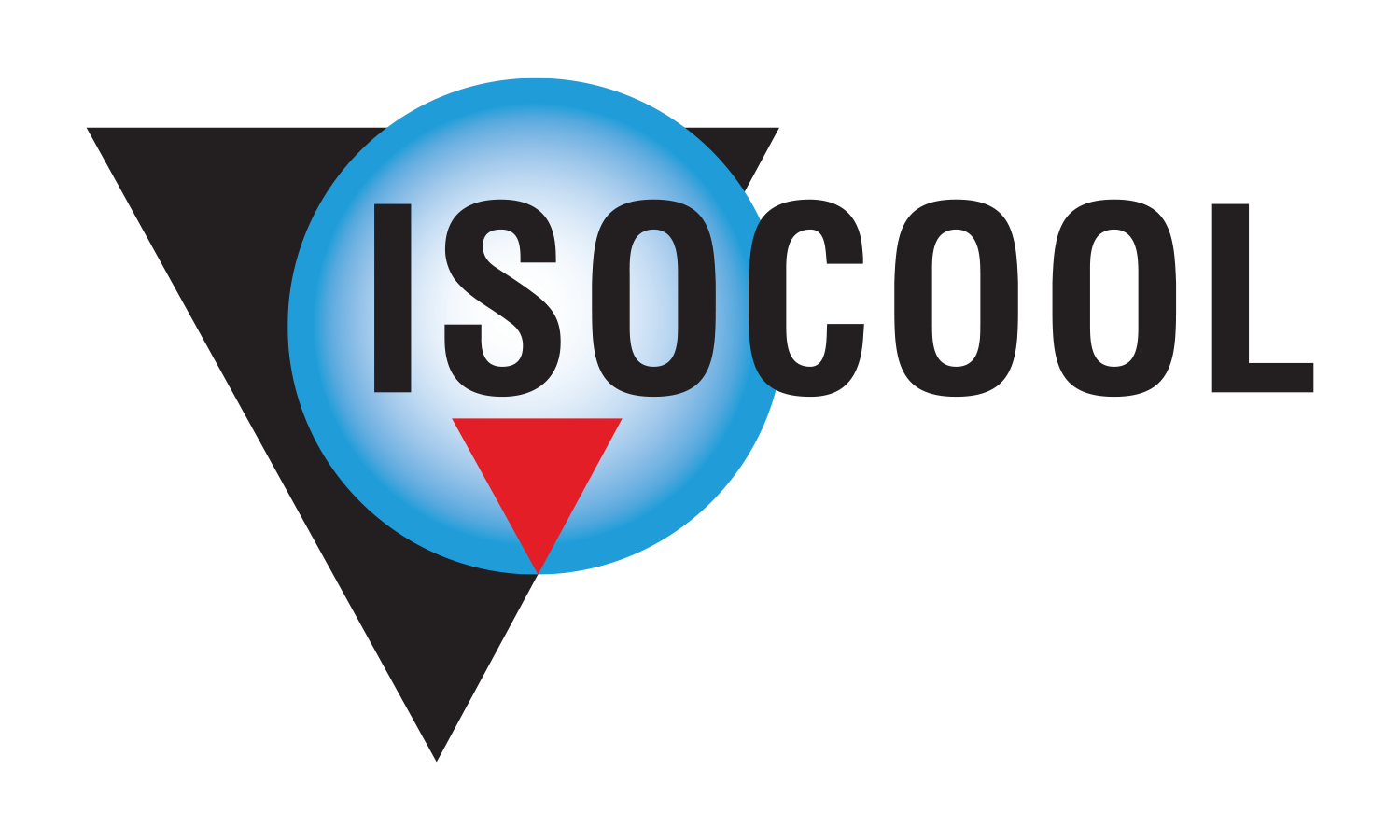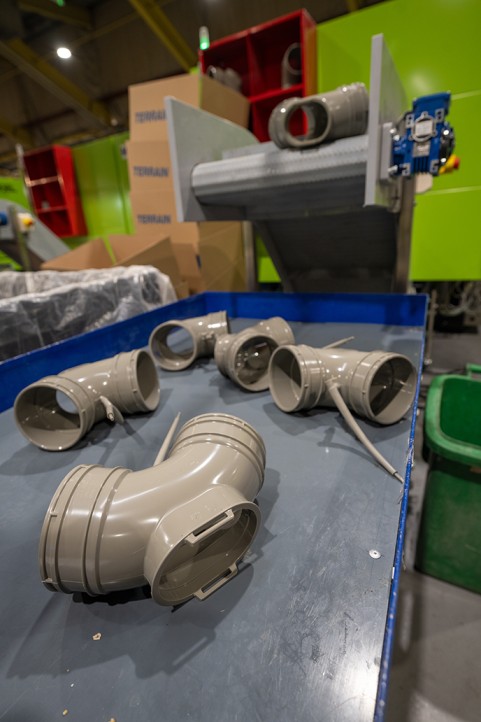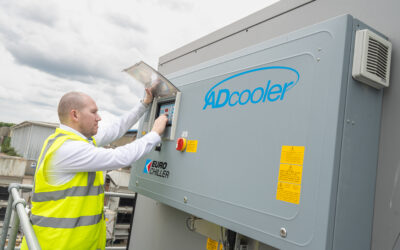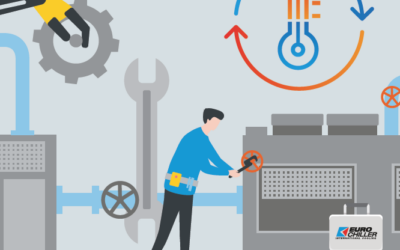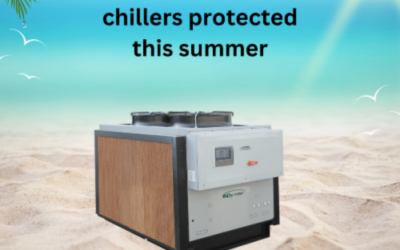Chris Ferriday, Business Line Manager, Process Cooling Solutions, Atlas Copco Compressors UK, explores the critical importance of thermal management in plastics manufacturing and considers the different cooling technologies now available to help improve operational efficiency and product quality.
The plastics industry is a cornerstone of modern manufacturing, producing a vast array of products that are integral to daily life, from pipes and guttering to furniture, flooring, automotive components and toys, as well as medical or food-grade packaging. Whatever the production method – injection moulding, blow moulding, thermoforming or extrusion – the heat generated during the production process must be managed effectively to ensure consistent product quality and to optimise efficiency
Click here to see what we offer for Plastics?
Cooling benefits
Cooling is a vital part of the plastics production process because it helps to solidify the plastic material after it has been shaped. Without proper cooling, the plastic may not solidify correctly or stick to the mould, leading to defects and inconsistencies in the final product. By optimising the cooling process, manufacturers can reduce cycle times, which increases throughput and productivity.
Proper cooling also supports product integrity because it ensures that the plastic parts do not warp, shrink, or develop internal stresses that could compromise their structural integrity. For instance, if the cooling is too rapid or uneven, it can cause the plastic to crack or become brittle. Conversely, insufficient cooling can lead to parts that are too soft and prone to deformation. Maintaining precise control over the cooling process is crucial for producing high-quality, reliable plastic products.
Effective thermal management even extends to keeping other essential equipment, right down to the lubricants in machine gearboxes, at the optimum temperature. Proper cooling helps to prevent overheating and excessive wear on machinery, thereby extending equipment lifespan. This not only reduces maintenance costs but also minimises downtime.
Types of process cooling
Various methods of process cooling are available, each with its benefits and limitations.
Air chillers work on the principle of evaporative cooling. A pump circulates water from a tank onto a series of cooling pads. A fan or blower draws warm air through these wet pads, which absorb the heat and reduce the temperature. Air coolers are more energy efficient than air conditioners, making them more cost-effective. They do not use refrigerants, which makes them more environmentally friendly, and with few moving parts, they have modest maintenance requirements.
Air coolers are an excellent option for energy-efficient and eco-friendly cooling, especially in dry climates. However, their effectiveness can be limited in larger or already humid spaces.
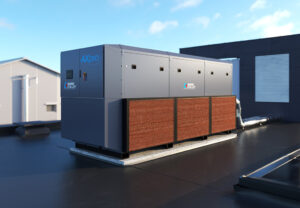 Water chillers use water and a refrigerant to absorb heat from the manufacturing process. They comprise four essential components: an evaporator, a compressor, a condenser, and an expansion unit. The water absorbs process heat, circulates to a cooling tower where the heat is evaporated away, and is then recirculated back to the chiller.
Water chillers use water and a refrigerant to absorb heat from the manufacturing process. They comprise four essential components: an evaporator, a compressor, a condenser, and an expansion unit. The water absorbs process heat, circulates to a cooling tower where the heat is evaporated away, and is then recirculated back to the chiller.
Water-cooled chillers are generally more energy-efficient than air-cooled equivalents because water is a better medium for transferring heat. They can also handle larger cooling loads and are quieter in operation. However, they can be more expensive to buy, require more space and have more complex installation and maintenance requirements.
Hybrid chillers combine the principles of both air-cooled and water-cooled systems. The chiller absorbs heat from the process using a refrigerant, which transfers the absorbed heat to a heat exchanger. The heat exchanger is cooled by air through fans and is sprayed with water to enhance the cooling effect through evaporation. The cooled refrigerant is then recirculated.
Combined chillers can optimise cooling efficiency because they can better adapt to changing environments, using more air in cooler climates and more water in hotter climates. This improved efficiency offers reduced energy consumption and cost savings over time. However, hybrid chillers are more complex to design and maintain.
Latest cooling technology developments
Process cooling technology is constantly evolving to improve reliability, energy efficiency, and drive down lifecycle costs. The development of more advanced materials with improved heat transfer properties has enabled free cooling methods, which use natural changes in air pressure caused by volume expansion to regulate temperature. For example, the AXpro from Eurochiller is a versatile process water chiller that can integrate multiple energy-saving technologies in a single solution to optimise efficiency and energy consumption in both winter and summer seasons.
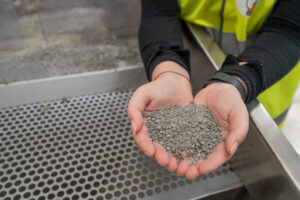 As well as being more energy efficient, some chillers even feature energy recovery technologies. The Eurochiller EVVS features an inbuilt Seasonal Energy Performance Ratio (SEPR) and also offers the option to use R454B refrigerant, which helps reduce greenhouse gas emissions.
As well as being more energy efficient, some chillers even feature energy recovery technologies. The Eurochiller EVVS features an inbuilt Seasonal Energy Performance Ratio (SEPR) and also offers the option to use R454B refrigerant, which helps reduce greenhouse gas emissions.
Increased connectivity between systems to improve operational efficiencies, enable predictive maintenance and optimise uptime is another area of focus. Monitoring packages such as SmartLink from Atlas Copco capture live data from compressed air and cooling equipment to give clear insights in real-time. This gives plastics manufacturers immediate access to data about uptime, energy efficiency and the health of their complete installation.
Selecting the right cooler
With so much cooling technology to choose from, the selection process can seem daunting, but there are some primary considerations that can help.
While CAPEX is always important, OPEX should also be taken into account to achieve the best return on investment (ROI). What seems like a good initial price can quickly undermine any initial saving if the chiller proves to be power-hungry, unreliable, or if spare parts are difficult or expensive to source.
Build quality, reliability, and service support are related factors in assessing the total cost of ownership (TCO). Look for companies with a strong pedigree and a proven reputation for service support.
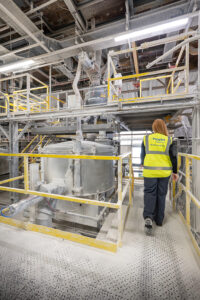 Resource use not only impacts running costs but also has implications for plastics manufacturers wishing to reduce environmental impacts. Cooling equipment requires power, water and, in some cases, a refrigerant. Chillers offering high energy efficiency, low water loss and the use of eco-friendly refrigerant can improve sustainability credentials.
Resource use not only impacts running costs but also has implications for plastics manufacturers wishing to reduce environmental impacts. Cooling equipment requires power, water and, in some cases, a refrigerant. Chillers offering high energy efficiency, low water loss and the use of eco-friendly refrigerant can improve sustainability credentials.
The scalability and flexibility of cooling equipment should support future business growth, so check whether the investment offers the ability to alter cooling capacity to match current variations in production demands and how easy it would be to extend in the future.
A full survey and technical analysis by your preferred supplier is recommended to establish cooling load requirements. This should consider internal and external equipment layouts as well as cooling equipment parameters such as flow, pressure and temperature.
Conclusion
Effective process cooling is vital for the plastics industry to maintain high standards of product quality and operational efficiency. Working with cooling experts, plastics manufacturers can achieve significant benefits in terms of energy savings, reliability, and environmental impact. Innovative cooling solutions can also enhance sustainability efforts by reducing energy consumption and using more environmentally friendly refrigerants. Investing in high-quality cooling solutions is a strategic decision that can drive long-term success and sustainability.
